So, you just got yourself your first audio interface and you are looking to buy a microphone.
Your friends advised you to look for a microphone with XLR connections, so that you can easily plug it into your new interface and record yourself.
Now, you might need to record a new podcast in which you talk about a random topic, or perhaps you want to record yourself singing your band's latest single.
On the other hand, you could also need to find a microphone for streaming purposes, perhaps to talk about stuff on Twitch or Facebook Live.
But, there are so many options, right?
Which one should you choose?
Hard question… I know.
But the good news is… You will know exactly what to get after reading this article!
Top 7 XLR microphones reviewed
Shure PGA-48 – Best for podcasts
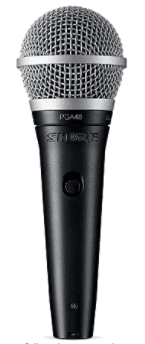
Specifications:
- Type. Dynamic (moving coil)
- Frequency Response. 70 to 15, 000 Hz.
- Polar Pattern. Cardioid.
- Output Impedance. 600 Ω
- Sensitivity. at 1 kHz, open-circuit voltage
- Weight. 300 g (10.58 oz.)
- Switch. On/Off Switch.
Sound Quality and Performance

The Shure PGA-48 is one of the most sold Shure microphones on the market.
Its frequency spectrum has been optimized for the vocal range, going from 70 to 15 KHz, so do not expect super lows, or brilliant highs…
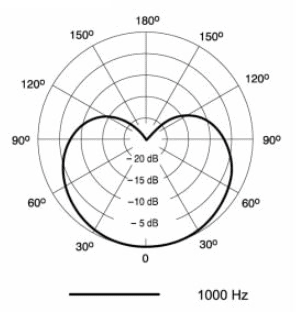
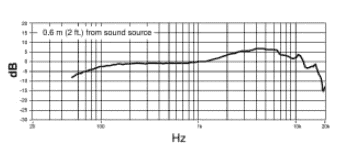
The capsule cannot resist a lot of gain, so watch out for distortion when singing loud!
Considering this situation, it could work for podcasts, streaming, karaoke or soft singing applications, not for pro uses.
The microphone comes with its own grill and internal pop filter to protect the membrane from "popping" at loud leves.
It does provide some noise rejection from the back, since it is a simple cardioid pattern.
Additional Features

The build quality is decent considering it is all made of plastic.
It weighs 300 grams, which is perfect for all types of singers using it as handheld, or any stand.
It comes with an ON/OFF switch that is actually very helpful, specially with younger singers in case some feedback situation happens!
The connections are extremely simple, just plug your XLR (or ¼") cable into it, turn it ON and you are ready to sing!
Pros
- Easy to use with a single ON/OFF switch on it.
- Comes with a zipper pouch and stand adapter for live purposes!
Cons
- Poor frequency response.
- Fragile membrane design.
Bottomline: If you are looking for a microphone to work on your podcast, screaming or simple karaoke or non-pro music rehearsal setup, the PGA-48 is a great option.
Audio Technica AT-2020 – Best for recording instruments
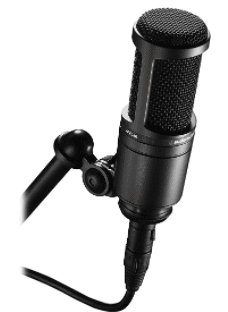
Specifications:
- Microphone Type: Condenser.
- Polar Pattern: Cardioid.
- Diaphragm Size: 0.63" (16mm)
- Frequency Response: 20Hz-20kHz.
- Max SPL: 144dB.
- Output Impedance: 100 ohms.
- Signal to Noise Ratio: 74dB.
- Self Noise: 20dB.
Sound Quality and Performance
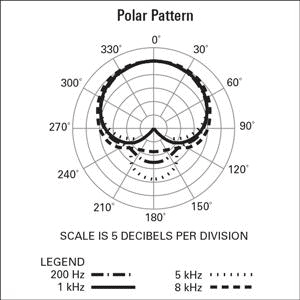
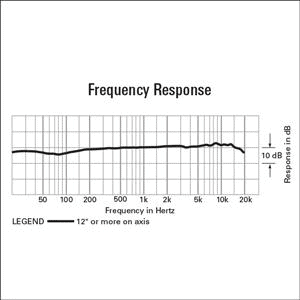
The AT-2020 is one of the most sold microphones by Audio Technica under their mid-level spectrum.
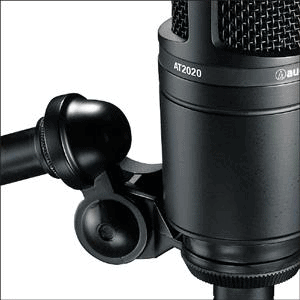
As a great all-around condenser microphone, it covers all the audible spectrum from 20 to 20 KHz with less than 1% of harmonic distortion!
The design comes with its own protective grill, but you are encouraged to use a pop-filter when recording vocals.
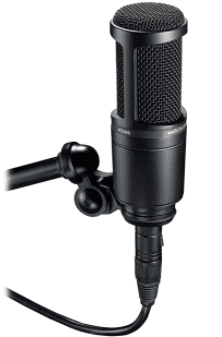
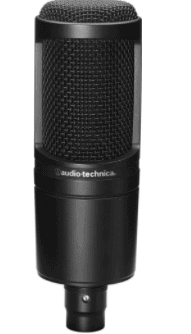
The mic was originally designed for singing applications, but it works great for instrument recording and even podcasting.
As all cardioid microphones, it provides noise rejection from the back only.
Additional Features
The microphone is built on a plastic frame, but it is actually very sturdy and easy to carry around.
It weighs around 340 grams, impressively light for a condenser microphone.
You will need to engage Phantom Power on your interface or console in order to "turn ON" this condenser microphone.
The output connector is the XLR standard so you will need to buy the XLR cable.
Pros
- Great sounding affordable microphone
- It comes with all the threaded adapters needed, a stand mount, and a pouch to carry it around.
Cons
- It has no controls such as pad or pattern selector.
- There are no filters included
Bottomline: If you are looking for a great-sounding microphone for podcasts or home studio recording, the AT 2020 is you for.
Marantz Pro MPM1000 – Best singing mic
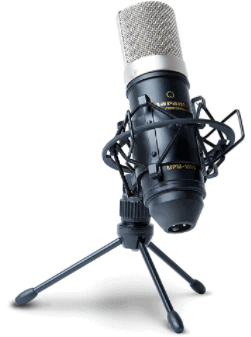
Specifications:
- Primary Applications – Studio Recording
- Form Factor – Stand/Boom Mount
- Intended Sound Sources – Vocals, Speech/Voice Over, Instrument
- Sound Field – Mono
- Operating Principle – Pressure Gradient
- Capsule – Condenser
- Diaphragm – 0.71" / 18 mm
- Polar Pattern – Cardioid
Sound Quality and Performance

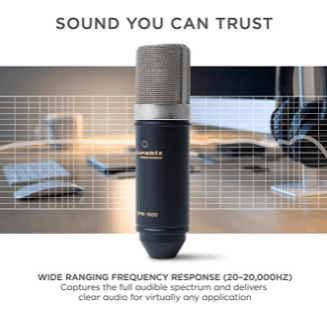
The pro MPM1000 is Marantz' budget condenser microphone designed for podcasting and streaming applications.
This microphone is capable of capturing frequencies from 20 to 20 KHz and yield less than 1% of distortion at very high level sound sources, making it very clean sounding.
Even though it was designed for Podcasting, its clean frequency response also makes it good for singing and home studio recording purposes.
It already comes with a windscreen so you can easily record yourself singing to it.
It is not the best at noise rejection because it has been designed to have high sensitivity to sound sources, so don't expect to use it outdoors or live.
Additional Features
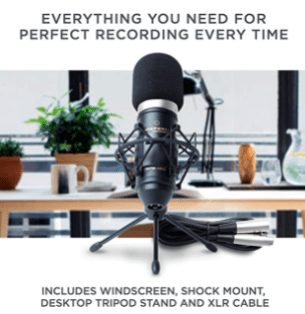
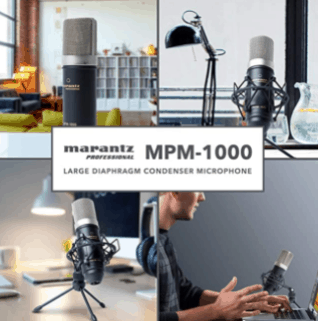
The microphone has been built to last with durable components that make it weigh only 300 grams, which is very impressive for a condenser microphone!
The microphone has no controls, but it comes with all the necessary accessories such as a windscreen, a shockmount, a tripod stand and even the XLR cable!
As all condenser microphones, it requires Phantom Power in order to turn it ON.
You must use the XLR cable provided to operate the microphone. ¼" cables are not supported.
Pros
- The microphone comes with all stands and mounting accessories as well as a windshield.
- The frequency response is impressively flat and clean!
Cons
- No controls are included on the actual microphone.
- It captures a lot of noise because of its high sensitivity.
Bottomline: If you are trying to start your own podcast at home, while your stream on Twitch, you should get the Marantz MPM1000.
MXL 990 – Best for recording vocals
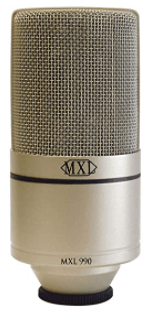
Specifications:
- Polar Pattern Unidirectional
- Frequency Range 30 Hz – 20 kHz
- Color Champagne
- Connector Type XLR Connector
- Connectivity Technology XLR
- Signal-to-Noise Ratio 80 dB
- Item Weight 0.7 Kilograms
- Number of Batteries 1 C batteries required.
- Impedance 200 Ohm
Sound Quality and Performance

The MXL 990 is a legendary workhorse between recording musicians and producers.
This condenser microphone is capable of delivering a flat frequency response between 30 and 20 KHz, ideal for recording vocals or string instruments.
This unit is great on home studios and project studios when you are trying to record acoustic guitars, banjos, violins or vocals on a budget.
The microphone does not come with a pop-filter, so you are encouraged to get one if you are going to be recording vocals at home.
Additional Features
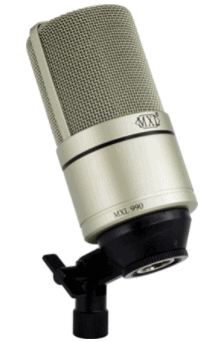

Build-to-last with a vintage body featuring a champagne finish and a weight of only 300 grams.
MXL was kind enough to include a shock mount as well as a carrying case so you can take this anywhere to record on-location or simply on the road while touring.
It does not have any controls on the actual frame, but it does require you to connect it to a Phantom Power source in order to use it.
The FET preamp comes with the XLR standard output, so you will need to connect it using the XLR cable.
Pros
- Impressive high frequency response
- Shockmount and carrying case included with the microphone
Cons
- No controls are included on the microphone.
- The package does not come with a windshield or pop filter for vocals.
Bottomline: If you are a singer and songwriter trying to find a microphone to record yourself as well as your acoustic guitar, get the MXL 990.
Rode NT2A – Best vocal mic
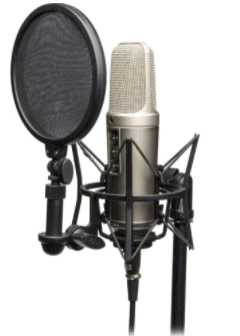
Specifications:
- Amplifier: Class AB
- Power Rating: 2 x 10W RMS
- Distortion (THD): <0.1%
- Frequency Response: 50Hz–20kHz -2dB
- Signal-to-Noise Ratio: 85dB
- Input Impedance: 18KΩ
- Product Dimensions: 5" x 5.75" x 7.5"
- System Weight: 6.5lb
Sound Quality and Performance
The NT2A is Rode's most famous condenser microphone, designed for all kinds of recording applications.
This microphone features an extremely extended frequency response that goes from 20 Hz to 20 KHz with all three polar pattern configurations.
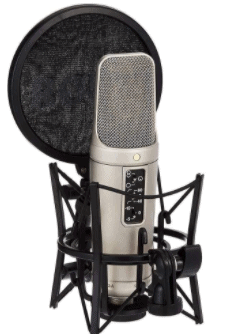
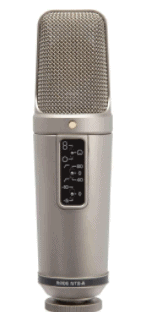
It is very clean and the distortion percentage is only around 1%, so the sounds are captured intact.
This piece is so clean and has so many features that you can use it for any type of recording, such as vocals, guitars, overheads, and any sound source that requires a microphone capable of capturing all the details.
The microphone comes with its own front grill to protect the capsule, but you are encouraged to add a windshield or pop filter when tracking vocals.
Additional Features
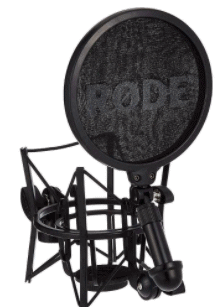
This microphone was built-to-last with a metallic frame that makes it weigh around 860 grams, making it very sturdy and solid.
It has three different polar patterns that you can easily toggle with a switch and alternate between cardioid, omni and figure 8.
It also comes with a pad that you can engage to reduce the input level of the mic.
There is a filter that you can engage at 40 or 80 Hz to cut the rumble of the room or low frequency noise.
This microphone needs phantom power to operate, and it is compatible with both 48 and 24 volt standards.
The package even comes with an XLR cable to connect it, as well as a dust cover and a shockmount.
Pros
- Super detailed frequency response.
- Pattern selector, pad switch and filter included.
- Heavy duty design
Cons
- No carrying case is included.
- No pop filter included
Bottomline: If you are recording vocals and instruments for a professional music production, the NT2A is a great choice.
Neumann U87 – Best studio mic
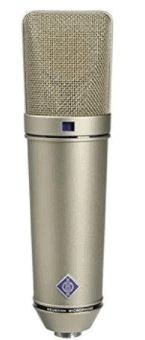
Specifications:
- Polar Pattern Multipattern
- Color Nickel
- Signal-to-Noise Ratio 80 dB
- Item Weight 5.4 Pounds
- Power Source Corded Electric
- Noise Level 6 dB
- Frequency response: 20Hz to 20kHz
- Impedance: 200 ohms
Sound Quality and Performance
The U87 is the professional studio standard for recording vocals because of its smooth sound and elegant design.
The frequency response is extremely balanced, giving you a flat sound from 20 to 20 KHz, making your lows strong, mids present and highs shinny!
This microphone is also known for its considerably low distortion percentage that is located around 0.5 %, making it perfectly clean.
The microphone works great on vocals, string instruments, drum overheads, pianos and choirs.
Due to its high sensitivity, it is not recommended to be used for live applications or at outdoor settings.
It comes with three polar patterns that can help you achieve more or less noise rejection depending on the selected pattern.
Additional Features
The microphone has been built on a metallic frame, making it very strong and capable of protecting its legendary FET capsule.
The U87 weighs 500 grams without its shockmount, which is included by the way!
This unit is really good at controls… It included a polar pattern selector that lets you switch between cardioid, omnidirectional or figure 8.
It also comes with a high pass filter at 60 Hz and a 10 dB pad for louder sources.
You will need to connect it to your console using Phantom Power and a required XLR cable to run the audio signals.
Pros
- Great sounding condenser microphone, ideal on vocals.
- Metallic construction makes it last forever!
- Plenty of controls available.
Cons
- Not very good on louder sources such as kick drum or bass amp.
- The package does not include a pop filter or case.
Bottomline: This is simply the best vocal microphone for professional recording studio sessions. If this is your case, get the U87.
Shure SM7B – Best streaming mic
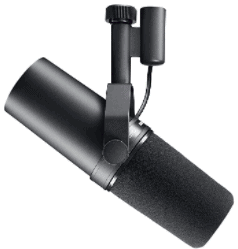
Specifications:
- Amplifier: Class AB
- Power Rating: 2 x 10W RMS
- Distortion (THD): <0.1%
- Frequency Response: 50Hz–20kHz -2dB
- Signal-to-Noise Ratio: 85dB
- Input Impedance: 18KΩ
- Product Dimensions: 5" x 5.75" x 7.5"
- System Weight: 6.5lb
Sound Quality and Performance
The Shure SM7B is one of the most famous microphones on the market designed for vocals, radio broadcasting and podcasts.
The frequency response goes from 50 to 20 Hz, which is perfect for any kind of vocal-oriented application with low distortion percentage due to its dynamic design.
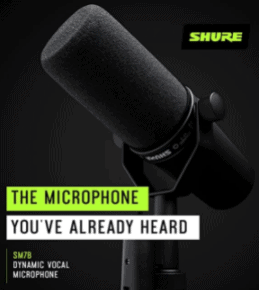
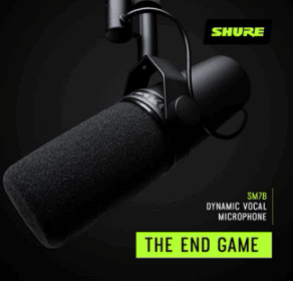
The output of the microphone can be considered a bit "low" compared to others, and resellers recommend pairing it up with a cloud lifter.
The dynamic design paired with the cardioid polar pattern and its embedded pop filter makes it ideal for radio interviews, podcasts, live streaming and singing.
Additional Features
The mic is made on a metallic material that makes it very sturdy and it comes with its own pop-filter that covers the front of the microphone.
You can actually switch between two different pop filters as well as simply removing it for brighter sounds.
It features bass rolloff (HPF) and mid emphasis (mid boost) switches on the back, that you can use to modify the sound depending on the situation.
The SM7B is very simple to use, does not need phantom power and it only captures sounds coming from the front of the microphone as all cardioid patterns.
The mic features a Yoke mounting system that is ideal for desktop stands and radio stations.
The internal "air suspension" shock reduces all kinds of possible mechanical noise, yielding super clean and noise-less sounds.
Pros
- Great frequency response for singing and speech purposes.
- Rugged construction makes it last forever.
- Switches on the back let you "shape" the sound for the occasion.
Cons
- The physical shape can be a bit bulky and not portable.
- Output can be a bit softer compared to other microphones on the market.
Bottomline: If you are recording a podcast, a radio show, or simply recording vocals for your band's latest single, the SM7B is a great and affordable professional solution!
Conclusion
Looking for a microphone that will let you record your singing vocals, radio show and podcast without breaking the bank? The Shure SM7B is your best bet.
Now, if you want a professional vocal microphone to record at a real studio and obtain GRAMMY level sounds, the Neumann U87 is the one.
Last, but not least, if you want an affordable microphone that will let you record your podcasts, sing or capture instruments, get the MXL 990 and thank me later!

